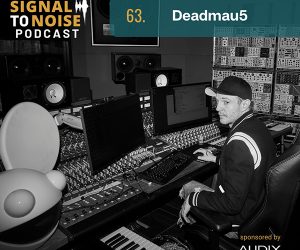When preparing for my Live Sound Summit 2020 (LSS2020) lecture on in-ear monitor (IEM) mixing earlier this year, I was trying to come up with a better understanding of key concepts that seem to underlie every interview or article I’ve read that focus on monitor engineers who primarily work with IEM users. My goal was developing a soundbite that I could present to anyone asking, “How can I become a better IEM engineer?”
To my surprise, it seems to have a lot to do with… cats. I presented the question to a panel at LSS2020 and the most common response was “mixing IEMs is like herding cats.”
While that might be true with some artists (and some engineers), I had a different answer in mind. Although you might have guessed it’s an acronym, in my mind every key concept is now represented by an image of a cute feline pet.
Accounting For Variables
The first cat in the herd is named Consistency. The role of the monitor engineer is to provide a consistent sound in their artists’ ears on every show. One might think this is quite easy if using the same microphones, the same mixer and the same earphones, but in fact the sound in the earphones is still greatly affected by other factors. The size and sound of the venue can dictate if the overall mixes will sound brighter or darker, reverberant or dampened, big or small.
The target sound can also be thrown off by different PA setups, especially when it comes to directivity. Subwoofers can be the biggest offenders here, since an omnidirectional sub configuration can spill much more low-end energy towards the stage than a cardioid or a gradient setup.
With all these variables in play, the responsibility of the monitor engineer is to reduce their effects and bring the sound of the mixes into the “zones of minimum tolerance” as defined by the sensitivity of the artist. What makes a great IEM engineer is the ability to assess these influences when the room is empty and deploy countermeasures to bring the sound closer to what the artist is used to hearing.
Since a lot of IEM users tend to skip sound check and thus there may not be the option of checking with them ahead of time, the first moment of the show will also be the first time the artist will experience everything in that room – the stage, the crowd, the venue. And no matter how many times you do this, that first hit is always the biggest reveal of your work. If nothing happens and the show goes on, great job. But if you get perplexed stares from the artist, you have to rethink your workflow and redefine what “minimum tolerance” sounds like to you and what it means to your artist.
Check The Ego
The name of the second fluffy creature is Altruism. When you’re mixing for IEM users, you’re not mixing for yourself. Period. There’s no room for, “I know what you need to hear so that’s what you’re getting, no matter what you are asking for.” In other words, bring your ego behind the mixing board and this cat will scratch the ego’s eyes out.
Granted, the engineer is the one shaping the initial sound for the users, but once the artist offers their notes, they become the law of the land. The only scenario where I intervene is if I believe the user is giving me directions that might permanently damage their hearing. I bring up my concerns in a conversation with them, and if they still insist on their way, that’s what they’re getting.
Sometimes there are artists that don’t really communicate what they like or don’t like, so the engineer has to sort of “guestimate” what they might need. However, after any alteration it’s vital to check with them to find out if the corrections sound better or worse than before. They might not even notice, and if it sounds better to you, you might decide to keep it.
But the bottom line is this: the user has the final say. I say that fully aware that engineers may have to create mixes that sound just awful to them, and nothing about it seems right. However, that mix might be exactly what someone needs in order to combine the sound from their ears with the sound from the stage, and/or to find a timing or pitch reference. Embrace it, remember it, work with it however you can, but it has to be their sound in the end.














